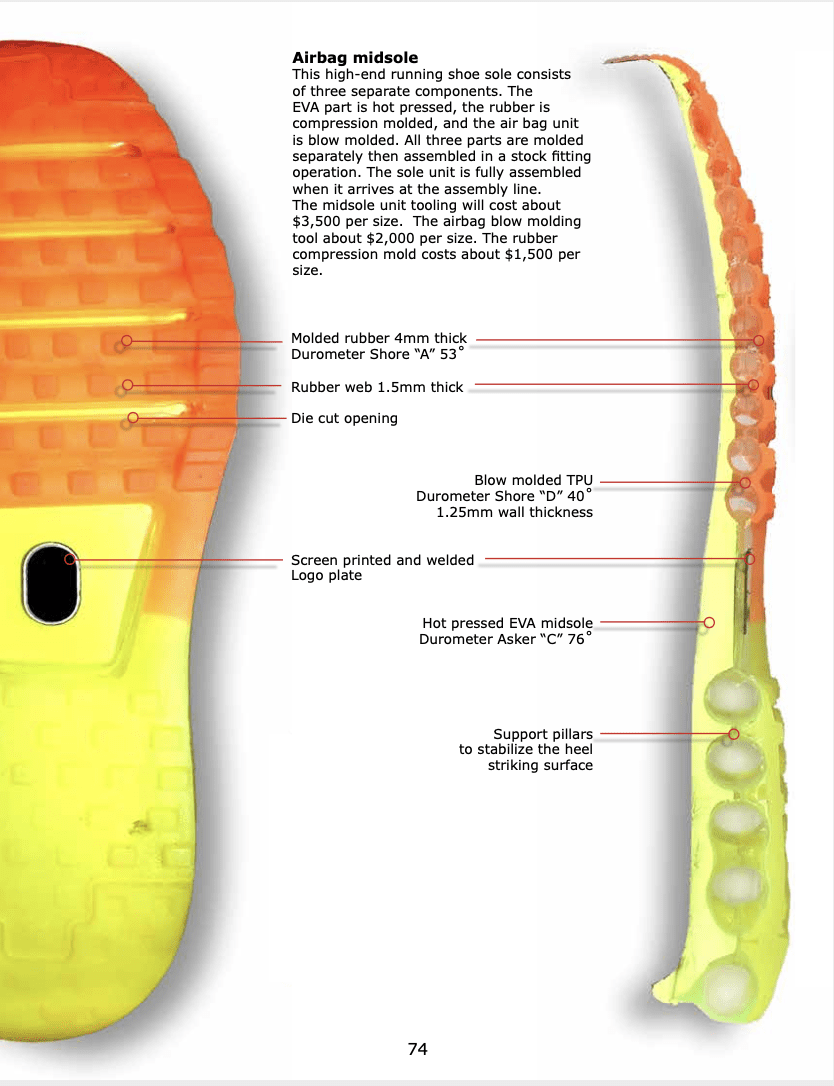Outsole Design For Footwear
The outsole design for a shoe plays a major factor in shoe performances. The outsoles for running shoes, biker boots, and football cleats all have very different performance requirements and manufacturing methods. The shoe outsole is also one of the most expensive parts of the shoe. For low-cost shoes, the outsole can be 10% of the shoe cost, second only to the leather cost.
For high-end basketball, running, or soccer shoes the outsole can be 25% to 35% of the shoe’s factory price. A simple cupsole may cost $2.00, while a multi-part running sole with carbon shank could cost $8.00 to $10.00.
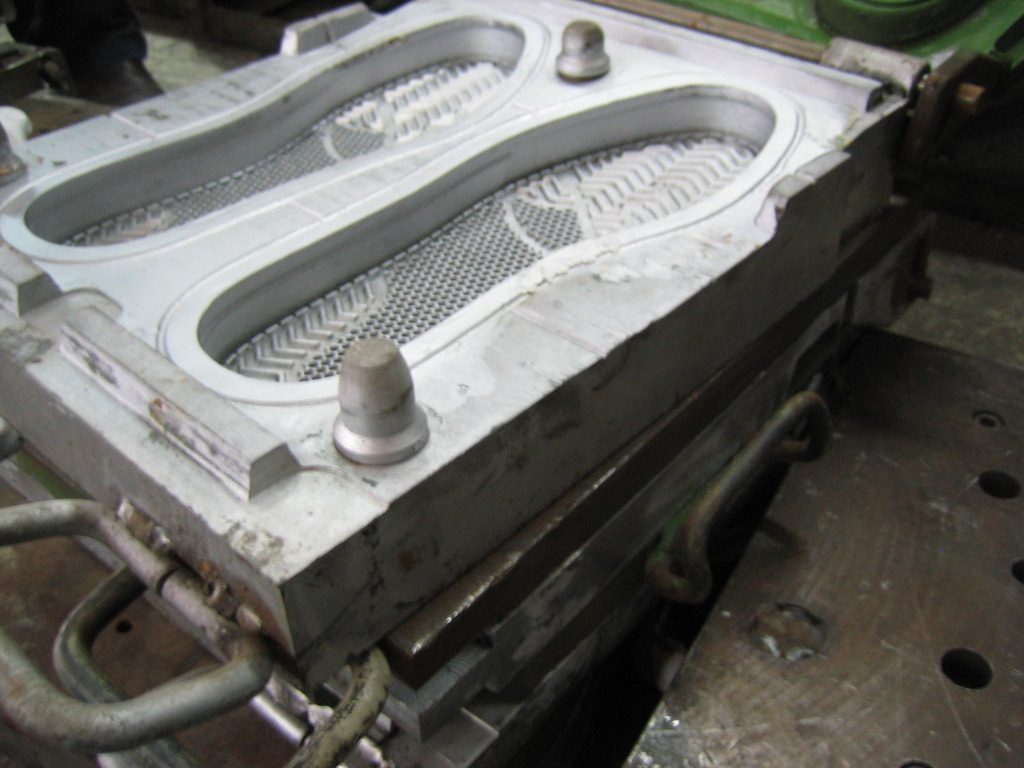
A set of outsole tooling is by far the most expensive equipment needed to produce a shoe. While the cutting dies required to produce a shoe upper may cost $1,000 for a complete size run, a single size of outsole tooling is a minimum of $1,400. Now, multiply that by 14 sizes, and you get $19,600! This is the cost for a simple rubber cupsole.
The cost for a complicated multi-part outsole with a rubber bottom, EVA midsole, and plastic shank plate may cost $100,000! Shoe companies must take great care in designing and developing new outsole tooling. Many shoe companies will only make one size for testing and sales samples. Only after their salesmen collect orders for the new model will the balance of the tooling be made.
I have seen designers and developers work for months to create a new design only to see production canceled before it even begins. When a weak sales report arrives, product managers have difficult choices to make.
Can you risk $100,000 in tooling for a model with just a hope that it will “catch on”? Small shoe companies may be forced to use old tooling on new models until they can afford the cost of new equipment.
Performance factors for Outsoles
Performance factors for footwear outsoles include traction, support, flexibility, weight, slip resistance, and durability. These features are a function of the design geometry and materials.
Outsole Traction
Traction is an important feature of any shoe outsole design. The design of the outsole pattern and selection of materials controls the amount
of traction. The traction requirements for hiking boots, office shoes, boat, and bowling shoes are all radically different.
When designing an outsole, it is important to understand the environment and surfaces the outsole will encounter. Traction is also directional. A mountaineering boot will require lateral traction on rough terrain, while a basketball sole needs to support quick stops on a smooth wood surface and allow spins with the foot planted.
Supportive Outsole
An outsole design must have some supportive features to ensure users can walk or run safely. Support can come from wider bases or added components such as molded plastic counters or rubber cut soles. A fast, lightweight running shoe designed for speed may have little support, while a mountaineering boot will have a metal shank to carry the weight of a heavy pack in rough terrain.
Outsole Flexibility
Depending on the intended purpose of the shoe, the midsole will require more or less flexibility. A tennis shoe or running shoe must be flexible, while a cowboy boot will have a steel shank to spread the load of the stirrups without bending at all. While more flexibility is usually a good thing, too much flexibility can cause instability and lead to foot fatigue. The general rule is, the heavier the load and the rougher the terrain, the stiffer the outsole.
Outsole Weight
Again, depending on the intended purpose of the shoe, the weight of the outsole may be a key feature. For a long-distance racing shoe or track spike, every gram is critical. For a driving shoe or biker boot, a heavy outsole is not a problem.
Outsole Durability
The durability requirements of an outsole design will depend on the environment and tasks selected for the particular shoe. The fine leather soles of women’s dress shoes and men’s office shoes are perfect for smooth stone hallways and carpeted offices, but would last only a few steps on a rainy construction site or mountain trail. Durability can be a selling feature for a shoe but may come at the expense of added weight or reduced flexibility.
Slip-resistant outsole design
Slip resistance is a key feature for service shoe outsole design. Restaurant, hospital, maintenance, and warehouse staff members are required to wear shoes with certified slip-resistant rubber compounds and tread patterns. Oil resistant rubber compounds may also be a requirement for industrial footwear.
How to make shoe sole
Rubber cupsole design
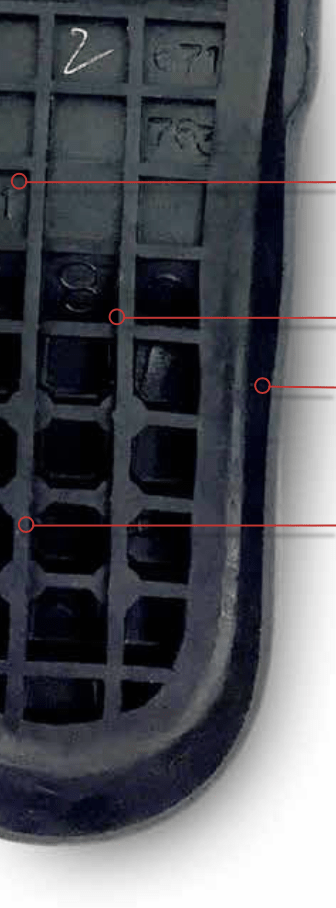
The rubber cupsole is the standard for inexpensive and durable footwear. This style is called a “cup” sole because it “cups” the upper of the shoe. The cupsole is very common outsole design and can be found in many styles of footwear. Hiking boots, casual shoes, army boots, skate shoes, court shoes, and sometimes a stylized cupsole can be found on inexpensive running shoes. A cupsole may have a “drop-in” midsole made of EVA blocks or an “egg crate” midsole molded inside the outsole. A cupsole is made by compression molding uncured rubber into a mold, much like making waffles. Cupsole tooling can cost from $1,500 to $2,500 per size.
Compression molded EVA outsole design
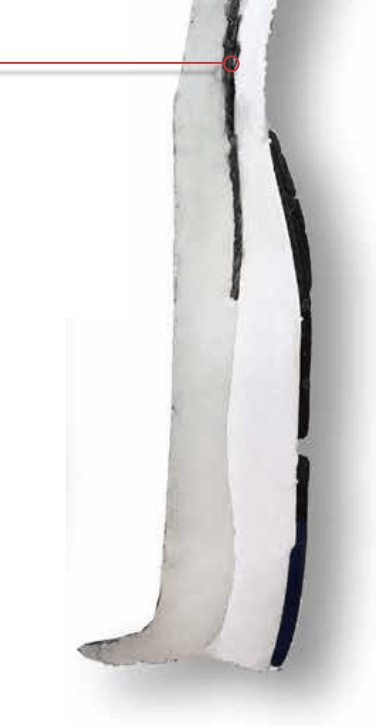
This running shoe outsole design uses a dual-density compression-molded EVA midsole with rubber inserts and a carbon fiber shank. This is an expensive outsole to make as it requires molds for the EVA, rubber, and shank parts. The EVA midsole is made by first bonding two EVA preforms with the molded shank in between. The final shape is made by compression molding. The compression-molded rubber parts are glued on in a separate operation.
Classic vulcanized outsole design
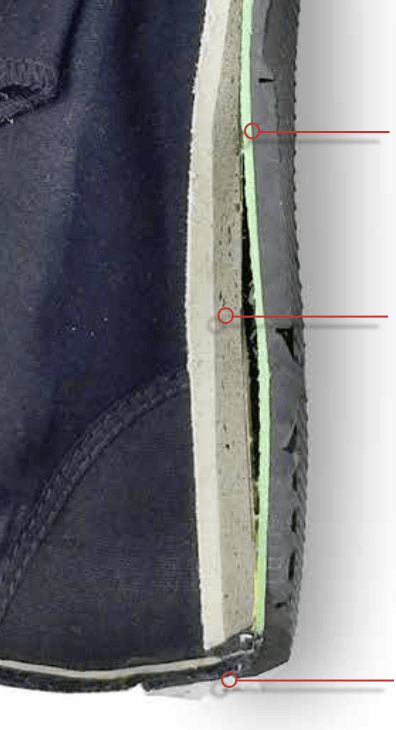
This outsole design shows the standard for vulcanized shoe construction. The grey rubber bottom is cemented to the upper, and then the rubber foxing tape wraps both. A toe cap and toe bumper are also added. Once the assembly operation is complete, the entire shoe is cooked at 110 ̊C for 70 minutes to cure the rubber; this makes the bonds permanent. This outsole requires a rubber compression mold for the bottom and a vulcanizing production factory to make the rubber parts.
Learn More about Outsole Design!
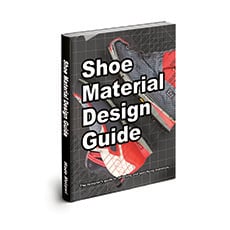
Chapter 12 of the Shoe Material Design guide details the 8 most common outsole types. Learn how to make shoe sole!
Check it out!
-
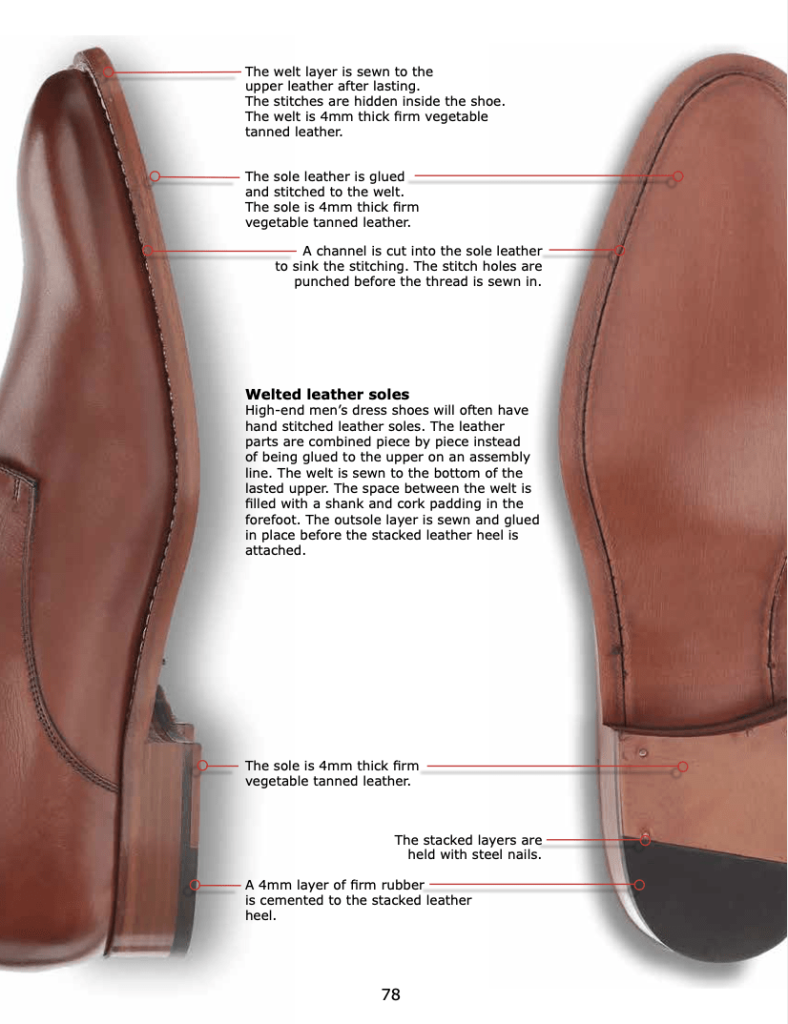
Leather sole -
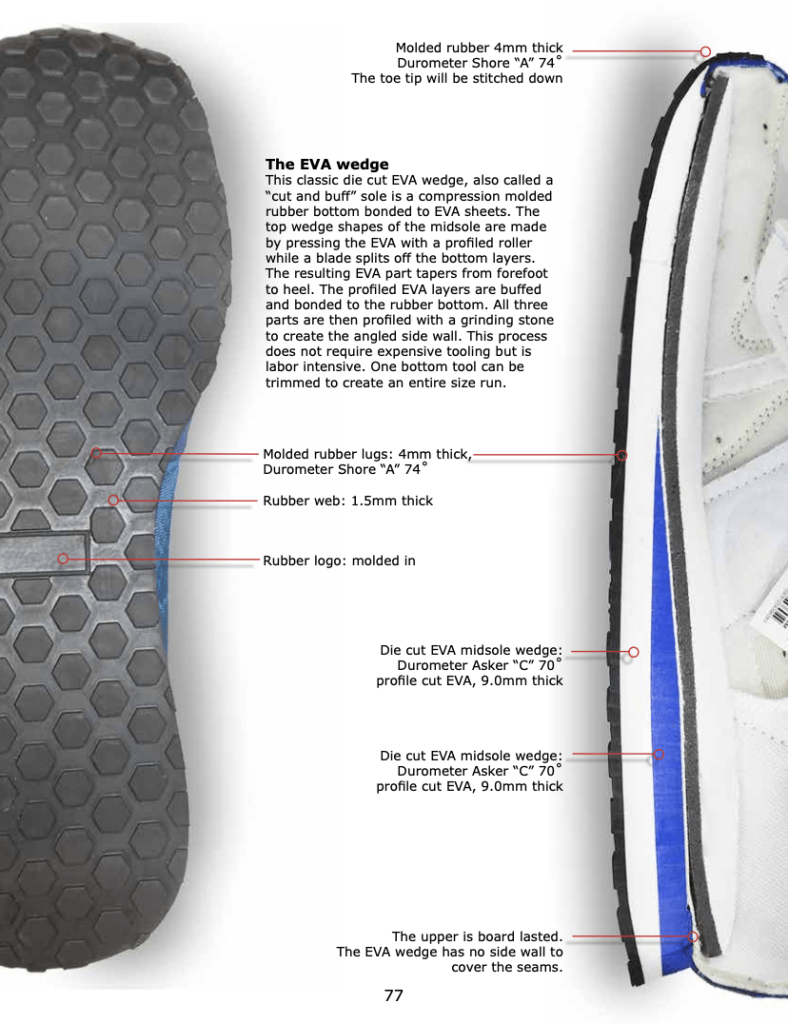
Classic trainer sole -
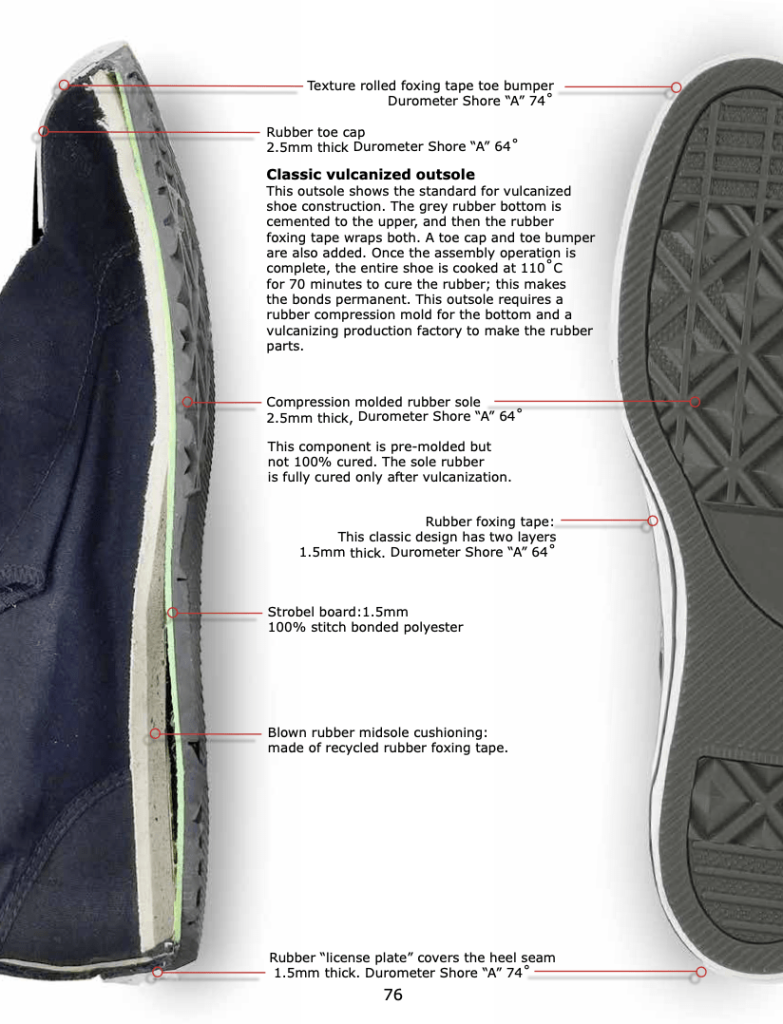
Converse sole -
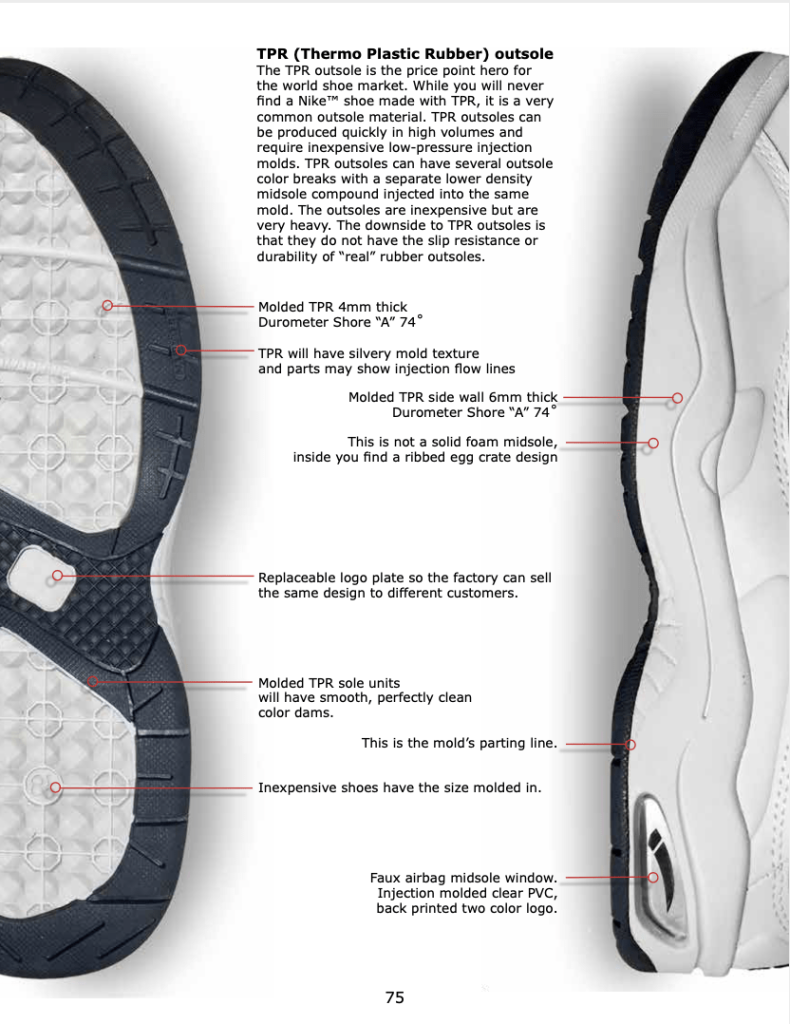
TPR outsole -
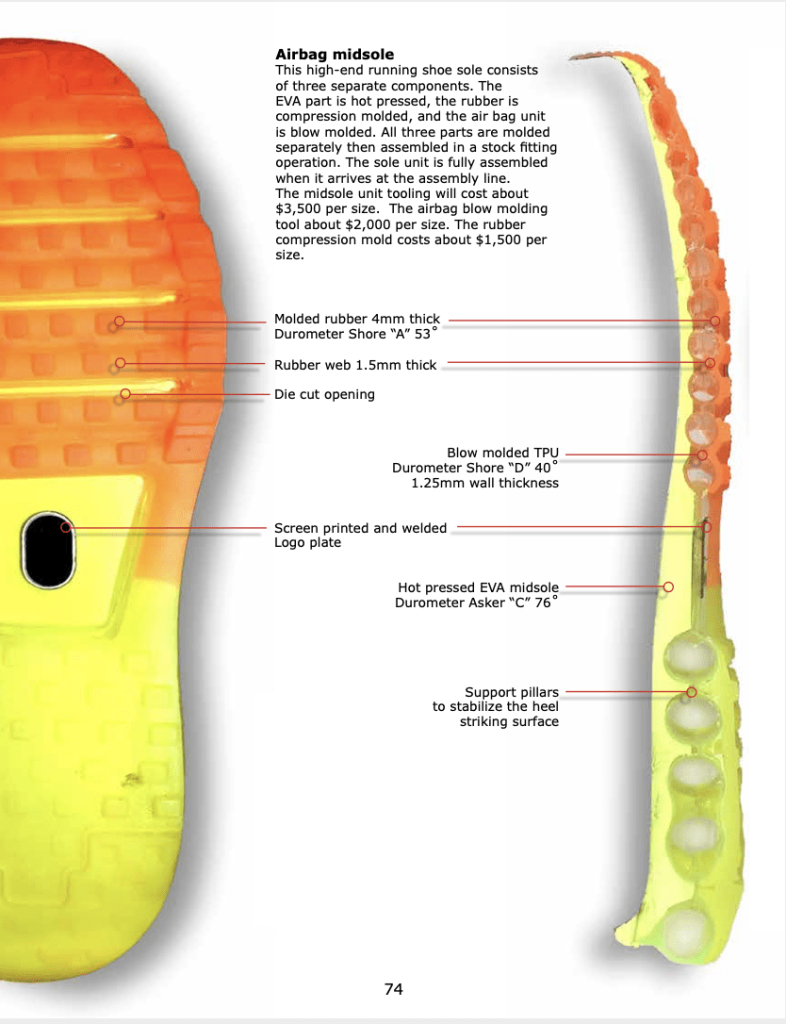
Nike air bag sole -
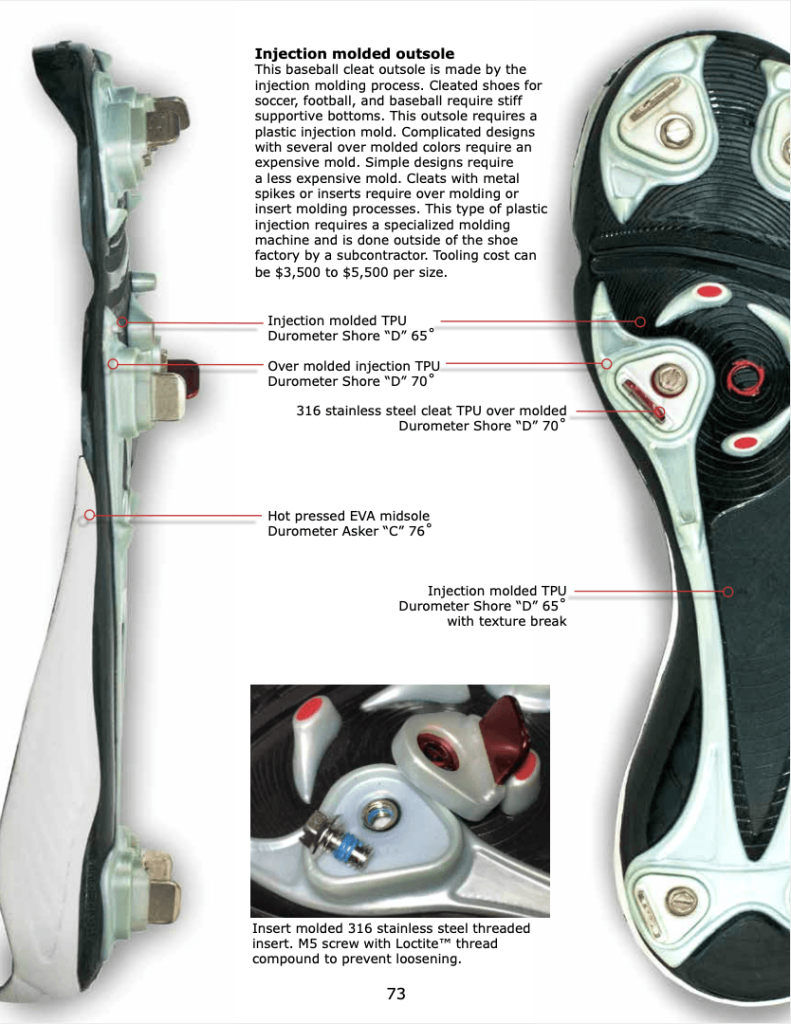
Injection cleated sole -
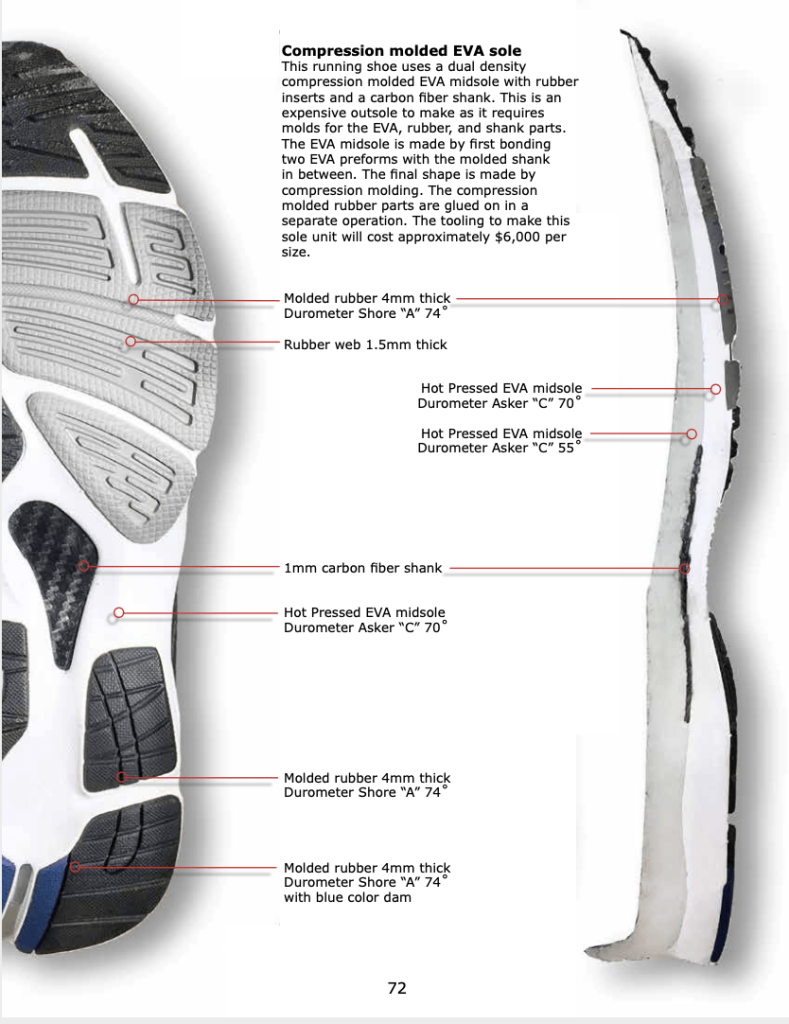
Running shoe sole -
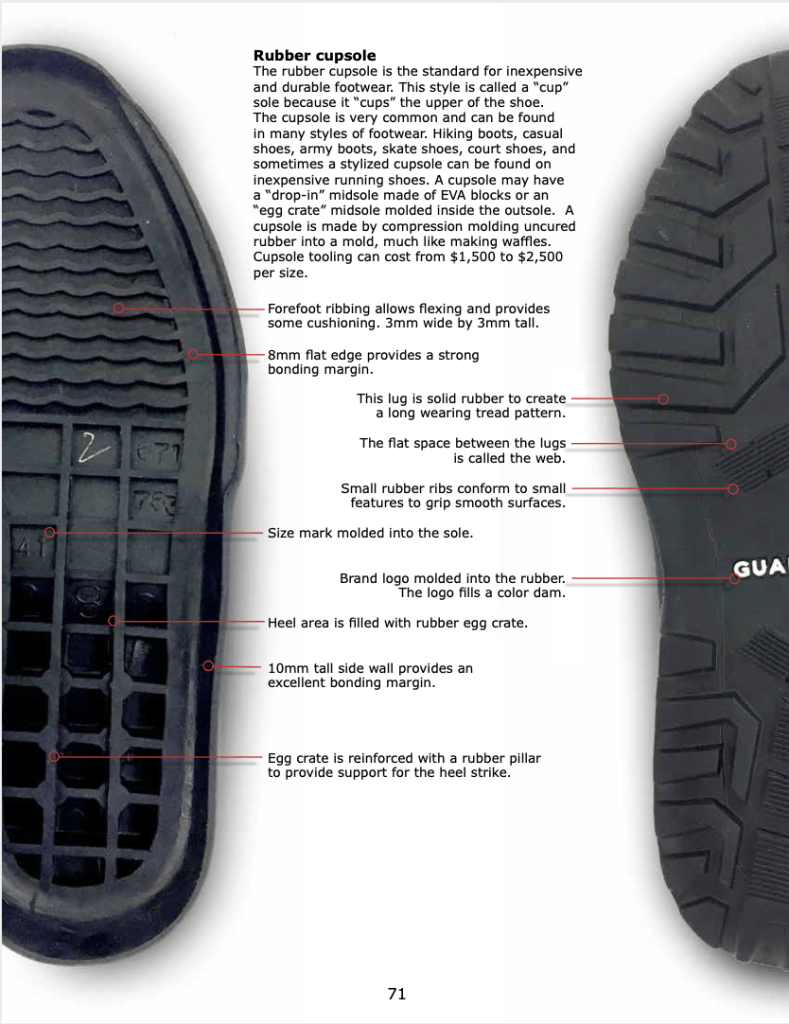
Rubber cupsole

